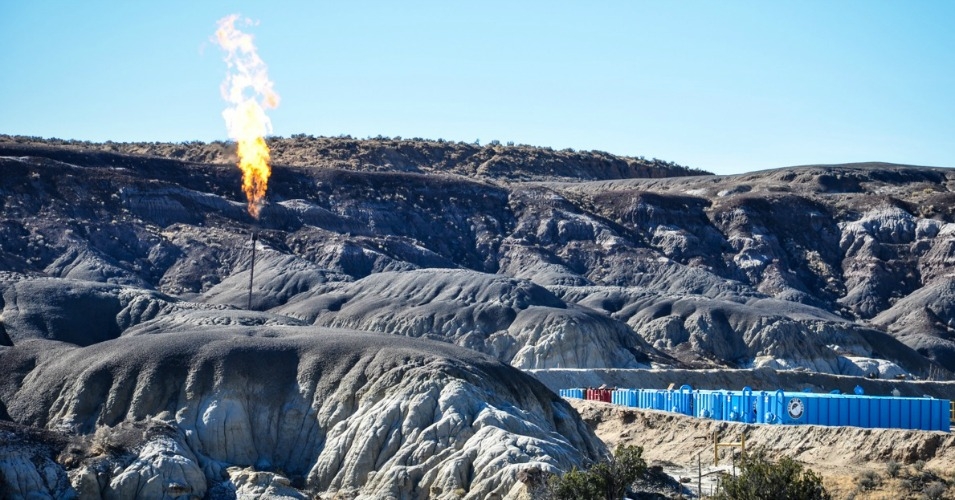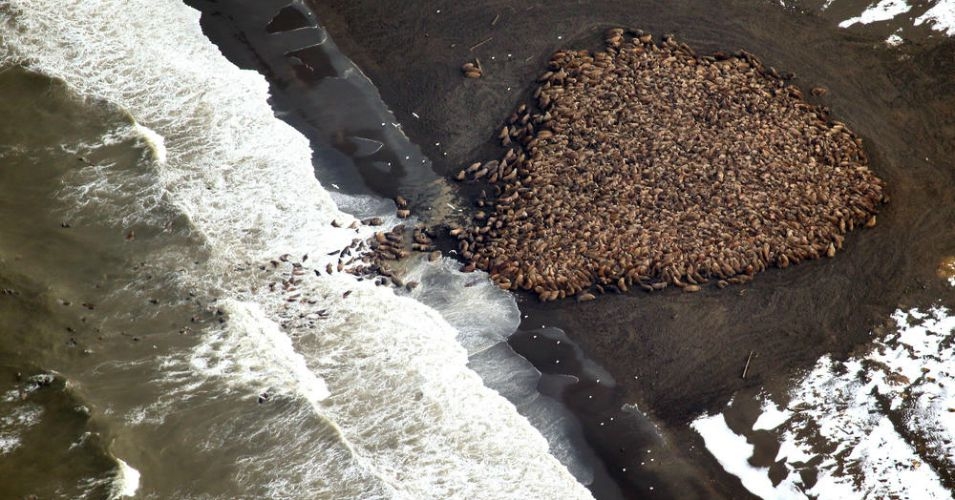A monstrous cloud of accumulated methane—a potent greenhouse gas—is now hovering over a large portion of the western United States according to satellite imagery analyzed by NASA and reported by the Washington Post.
Created by years of intentionally released and errantly leaked natural gas during fossil fuel drilling operations, the cloud—invisible to the human eye but captured by advanced satellite imaging technology—is centered over northwest New Mexico and described by thePost as “a permanent, Delaware-sized methane cloud, so vast that scientists questioned their own data when they first studied it three years ago.”
So alarmed by the size of the plume were scientists, NASA researcher Christian Frankenberg told the Post, “We couldn’t be sure that the signal was real.”
Though there is considerably less of it put into the atmosphere each year, methane is twenty times more powerful as a greenhouse gas than carbon-dioxide or CO2.
The accumulation of methane is not a new problem, but one that appears to be worsening as hydraulic fracture drilling (or fracking) and other intensive fossil fuel extraction operations continue to soar in the southwest region of the country. The latest NASA analysis of the phenomenon put the approximate “average extent of the gas plume over the past decade at 2,500 square miles.” Frankenberg pointed out that this estimate pre-dates the most recent gas and oil drilling boom now underway in the southwest.
Though the industry has longed ignored the dangers of so-called gas “flaring”—in which excess methane is simply burned off during oil and gas drilling or processing—environmenalists and climate scientists have long been sounding the alarm about methane’s impact when it comes to global warming and other ecological hazards. And though natural gas has been heralded as a cleaner alternative to coal, numerous studies have shown that though gas burns cleaner than coal, the ability of gas to escape during extraction and transportation, the cumulative greenhouse impact could be equal or worse than coal.
Using available data, this graphic was created the Post:







Common Dreams doesn’t include the part about how the report states simple fixes are available to resolve methane leaks. Common Dreams neglects to mention the Obama Administration is proposing strong regulations to put these fixes in place. Common Dreams doesn’t say that the industry is very open to reducing methane leaks as much as possible.
But MGx should.
http://www.washingtonpost.com/national/health-science/delaware-sized-gas-plume-over-west-illustrates-the-cost-of-leaking-methane/2014/12/29/d34c3e6e-8d1f-11e4-a085-34e9b9f09a58_story.html?hpid=z4
I don’t see how the link you posted helps your case at all. Its talks about potential future fixes to the methane leaks and the wasteful flares burning, but it does not give any examples where they have fixed any of the problems that fracking causes. Fracking should be banned nationally until they can prove to the scientific community that it is safe. They can’t do that, because its not safe on many levels.
From the story:
As early as next month, the Obama administration will announce new measures to shrink New Mexico’s methane cloud while cracking down nationally on a phenomenon that officials say erodes tax revenue and contributes to climate change. The details are not publicly known, but already a fight is shaping up between the White House and industry supporters in Congress over how intrusive the restrictions will be.
. . . . environmentalists say relatively modest government restrictions on gas leaks could reap substantial rewards for taxpayers and the planet. Because methane is such a powerful greenhouse gas — with up to 80 times as much heat-trapping potency per pound as carbon dioxide over the short term — the leaks must be controlled if the United States is to have any chance of meeting its goals for cutting the emissions responsible for climate change, said David Doniger, who heads the climate policy program at the Natural Resources Defense Council, an environmental group.
….
“The good news is that there are simple technologies and practices that the oil and gas industry can use to substantially reduce this waste,” said Mark Brownstein, an associate vice president for climate and energy at the Environmental Defense Fund, one of the contributors to the report.
—–
MOST of the fracking currently being done in the US is done safely and responsibly. The smaller operations are the ones that cause most of the leaks. The story doesn’t report on leak-free fracking examples because that is the norm. That’s not a story. Fracking technology is not new; it’s been done for decades. What’s new is that so much is being done and under so little regulation that marginal operators are causing significant problems.
But let’s say you’re right — making fracking illegal is the only way to go. How exactly do you propose to do that? As things are getting Obama’s new regulations approved will be a heavy lift. It’s one thing to pass a referendum in New York; quite another to pass one in SD or Texas. Then you’ll have to explain how you would extend that ban to the rest of the world because global warming is a global problem. Once again, good policy / impossible politics.